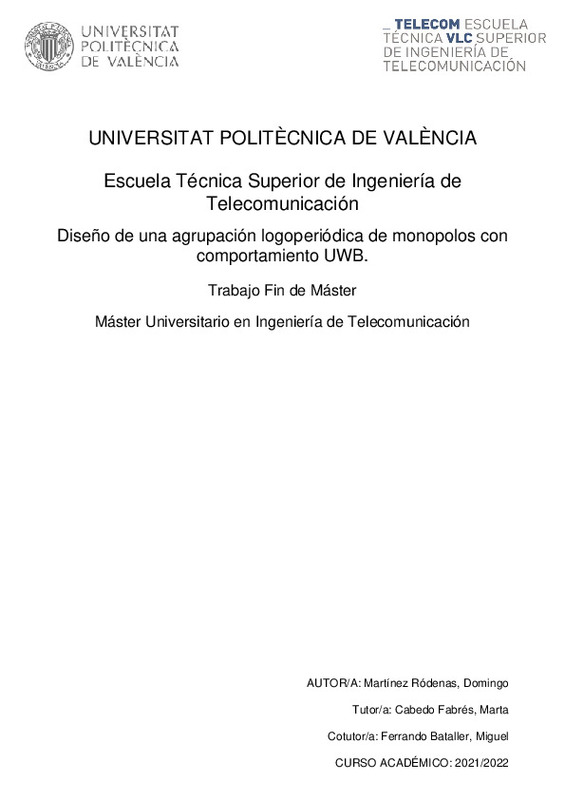JavaScript is disabled for your browser. Some features of this site may not work without it.
Buscar en RiuNet
Listar
Mi cuenta
Estadísticas
Ayuda RiuNet
Admin. UPV
Diseño de una agrupación logoperiódica de monopolos con comportamiento UWB.
Mostrar el registro completo del ítem
Martínez Ródenas, D. (2022). Diseño de una agrupación logoperiódica de monopolos con comportamiento UWB. Universitat Politècnica de València. http://hdl.handle.net/10251/187902
Por favor, use este identificador para citar o enlazar este ítem: http://hdl.handle.net/10251/187902
Ficheros en el ítem
Metadatos del ítem
| Título: | Diseño de una agrupación logoperiódica de monopolos con comportamiento UWB. | |||
| Otro titulo: |
|
|||
| Autor: | Martínez Ródenas, Domingo | |||
| Director(es): | ||||
| Entidad UPV: |
|
|||
| Fecha acto/lectura: |
|
|||
| Resumen: |
[ES] En este Trabajo Fin de Máster se hará uso de un software comercial, CST Studio, para obtener un diseño de una agrupación logoperiódica de dipolos (LPDA) alternativo a la estructura convencional. A fin de compactar el ...[+]
[EN] In this work, the commercial software CST Studio, will be used to obtain a design of a logoperiodic dipole array (LPDA) alternative to the conventional structure. In order to compact the size, monopoles will be used ...[+]
|
|||
| Palabras clave: |
|
|||
| Derechos de uso: | Reserva de todos los derechos | |||
| Editorial: |
|
|||
| Titulación: |
|
|||
| Tipo: |
|
recommendations
Este ítem aparece en la(s) siguiente(s) colección(ones)
-
ETSIT - Trabajos académicos [2408]
Escuela Técnica Superior de Ingenieros de Telecomunicación







